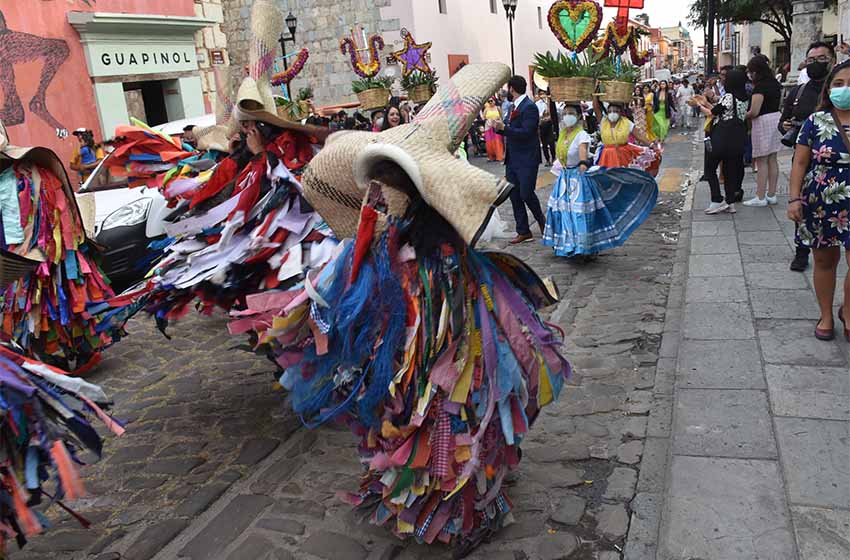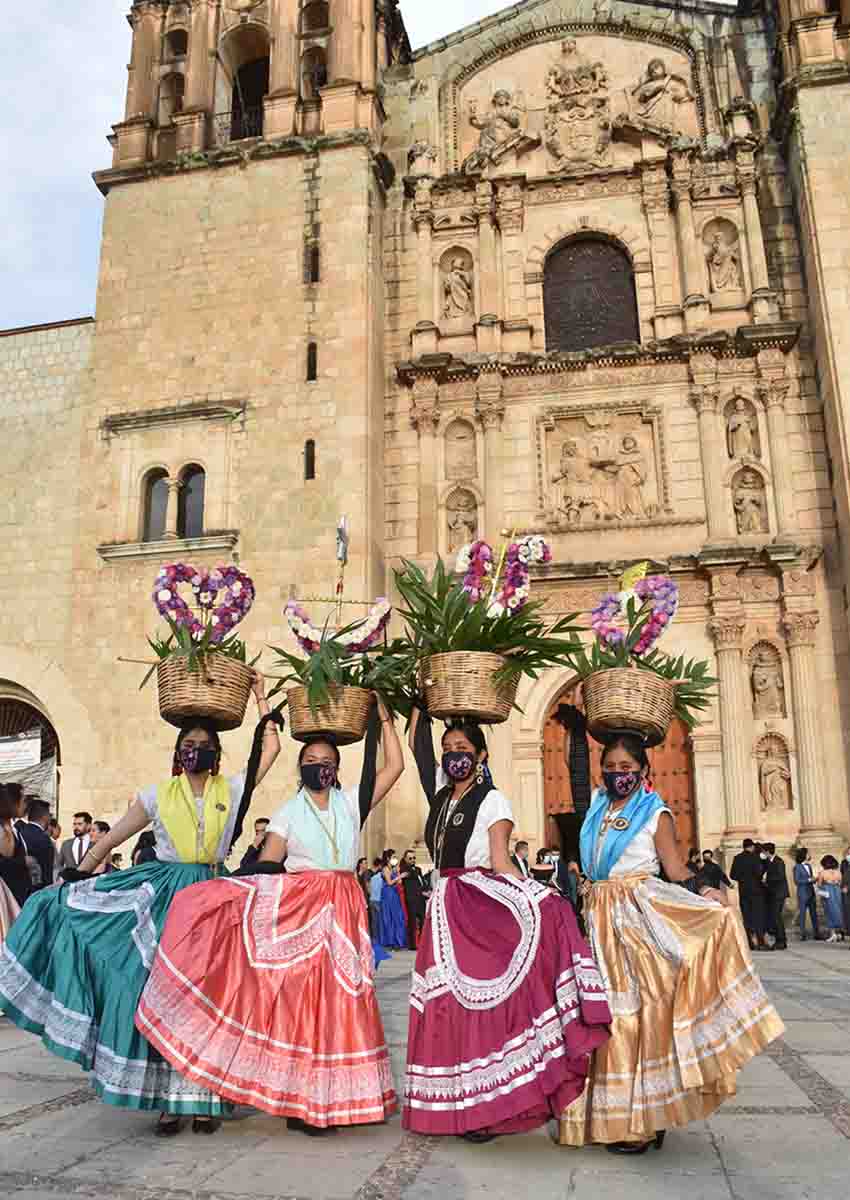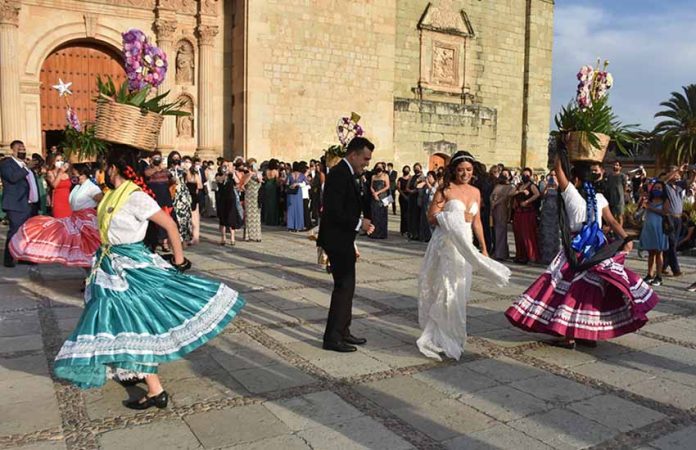Before moving permanently to Mexico — I’ve now lived here for 3 1/2 years — I did a dozen photographic and writing projects here over 20 years, nine states and dozens of pueblos.
During those projects, I learned the importance of careful planning, packing the right equipment and taking enough supplies. I also learned the importance of being flexible when nothing goes as planned — which often happens in Mexico.
True to form, during a recent photography trip to Oaxaca, little went as planned.
During my time in one of my favorite Mexican cities, I wanted to photograph and write about Santo Domingo Cathedral and the Basilica of Nuestra Señora de Soledad, two of the larger and more beautiful churches there.

Santo Domingo houses some impressive pre-Hispanic pieces from the Monte Alban archaeological site, including a gorgeous jade mask. The basilica has a large collection of retablos, religious art typically painted on small rectangular tin sheets. Both places have attached museums.
But on my first day, arriving at Santo Domingo around 10:30 a.m., I quickly realized I’d need a Plan B. The church door was closed and locked.
I moseyed on over to the museum entrance; a sign informed me that it was closed for renovations. OK, scratch that museum off the list. I asked the guard what time the church opened and was told 4:30 p.m. Seemed a little late for a church, but I figured I’d head to the basilica and return to the cathedral around 5 p.m.
Nuestra Señora de Soledad was initially built in 1582, but a series of earthquakes damaged it and it was rebuilt in 1682. Its main entrance is a tower that measures 24 meters (almost 80 feet) in height, and the doorway is surrounded by statues of 12 saints. The Virgin of Monte Calvaro occupies the spot above the doorway.
The interior of the basilica is pretty, but since I’d already planned on photographing inside Santo Domingo — it’s covered with gold leaf — I headed over to the basilica’s small museum to get shots of the retablos.
When I got there, I learned that photographs are not allowed. I was told that I’d need permission even just to photograph the posted information. So, unfortunately, I can only describe to you what the museum has.
Its walls in the main room are covered with dozens of these retablos, some as small as 4×6 inches and some as large as 4×5 feet. Retablos depict a person in a life-threatening situation — perhaps a serious illness or an accident which has prompted the retablo’s creator to pray to a saint or a Virgin for intervention.
When the person in danger survives, the one who prayed for help — whether for themselves or for someone else — paints the retablo depicting the danger and the religious figure that interceded, as a way of giving thanks.
Retablos (also known as exvotos) are often referred to as folk art, I suppose mainly because they are painted by people without any formal art training and may appear to be crude, but there’s a power in that them I find compelling. They’re an expression of a person’s deep faith.
The museum also has clothing from the 18th century that was used to dress statues of the Virgin and intricate designs made from little metal figures called milagros.
Later that afternoon, I headed back to Santo Domingo to photograph the interior. Well, that was my plan.
A block from the cathedral, I stumbled upon a fiesta. The street was filled with women dressed in beautiful traditional clothing, carrying large baskets filled with flowers on their heads and, often, a cross. The men wore what looked like colorful rags.

After asking permission to photograph, I asked what the heck was going on and learned more about Mexican traditions.
The women, devotees of the Virgin de la Soledad, are called chinas oaxaqueñas, part of traditional festivals in Oaxaca. It seemed a little odd to me that they’re called chinas, but online research revealed possible explanations for the name.
The name may come from chinitos, a type of ceramics the women make. Another explanation is that the word china signifies a pretty Oaxacan woman.
The costumed men are called tiliches, another traditional figure in many Oaxacan festivals.
Tiliches originated in Putla Villa de Guerrero, a pueblo about 150 miles west of Oaxaca.
The story goes that at the end of the 19th century, workers at the large haciendas wanted to celebrate carnival. Being poor, they dressed in rags, but this didn’t stop them from celebrating.
Later, the costumes evolved into strips of colorful cloth, masks made from animal skins and huge sombreros.
Turns out the costumed men and women were part of a wedding celebration. Two huge papier mache figures of a bride and groom were carried through the streets. After taking a bunch of shots, I headed to the cathedral, only to be denied entrance once again. Another wedding was taking place inside the cathedral and I wasn’t able to enter. But there were more chinas oaxaqueñas in front, and they invited me to take photos. How could I resist?
Once the bride and groom left the church, the chinas oaxaqueñas started to dance, and the newly married couple joined in.
It took days to finally get inside the cathedral. It was either locked or a Mass was being celebrated, and the pandemic meant the number of people allowed inside was limited. But I ended up being glad for the delay.
Santo Domingo cathedral and the adjacent monastery began construction in 1575 and continued for about 200 years. The outside is quite plain and doesn’t hint at what’s inside: interior walls covered with sheets of 24-karat gold leaf.
I knew from previous visits that in the late afternoon, sunlight streams in through a large window at the front of the church, striking the main altar and really lighting it up, so I sat in one of the pews and waited.
Finally, the light was just right, and as I rose to take a photo, an elderly couple approached the altar and knelt. I wanted to get close but was afraid I’d lose the shot, so I photographed them while on one knee. That was the only photo I’d get because as soon as I took it, they rose and walked away.
So, despite the challenges and disappointments, I was very happy with what I was able to get. When we’re faced with difficulties, people will often say, “I’m sure things will work out.” They’re right. Things always work out. They just never work out the way you imagine.
Sometimes that’s a good thing.
Joseph Sorrentino, a writer, photographer and author of the book San Gregorio Atlapulco: Cosmvisiones and of Stinky Island Tales: Some Stories from an Italian-American Childhood, is a regular contributor to Mexico News Daily. More examples of his photographs and links to other articles may be found at www.sorrentinophotography.com He currently lives in Chipilo, Puebla.
